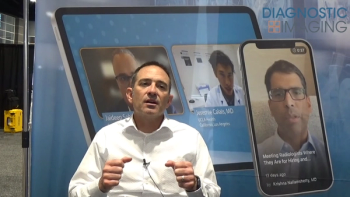
Siemens proves feasibility of MR/PET hybrid
The first brain images produced simultaneously with a prototype MR/PET scanner were shown at the Siemens Medical Solutions booth and in a scientific session in Berlin. The device, currently in development at a Siemens lab, integrates a PET detector into the bore of a 3T scanner.
The first brain images produced simultaneously with a prototype MR/PET scanner were shown at the Siemens Medical Solutions booth and in a scientific session in Berlin. The device, currently in development at a Siemens lab, integrates a PET detector into the bore of a 3T scanner.
A mock-up of the underlying concept appeared at the RSNA 2006 meeting in November. An advanced form was used to support both phantom and human studies in recent efforts conducted by researchers from the University of Tennessee and the University Tubingen and Max Planck Institute for Brain Research, both in Germany. Their work involved a combination of PET images produced with fluorine-18 and MR-generated T2 images.
The hybrid improves spatial correlation while reducing scan time compared to separate MR and PET imaging, the researchers said. Their paper, presented Thursday, May 24, at the ISMRM meeting in Berlin, described the use of lutetium-oxyorthosilicate (LSO) scintillation crystals in combination with next-generation Avalanche Photodiode Detector (APD) technology to capture PET data.
Five LSO-APD block detectors form 32 cassettes were arranged axially in Siemens' Trio MR scanner, creating an axial field-of-view of 19 cm and an inner ring diameter of 35.5 cm. A standard birdcage transmit/receive head coil from Siemens was mounted on the scanner bed and placed inside the PET detector to allow the simultaneous acquisition of PET and MR data.
The tests proved the feasibility of the hybrid scanner, according to the researchers. Images showed only the MR and PET data, as the PET detector was invisible during MR data acquisition. The detector also had no effect on either MR spectroscopy or MR signal-to-noise measurements, they reported.
More extensive testing using clinical subjects is expected to begin later this year.
Newsletter
Stay at the forefront of radiology with the Diagnostic Imaging newsletter, delivering the latest news, clinical insights, and imaging advancements for today’s radiologists.




























